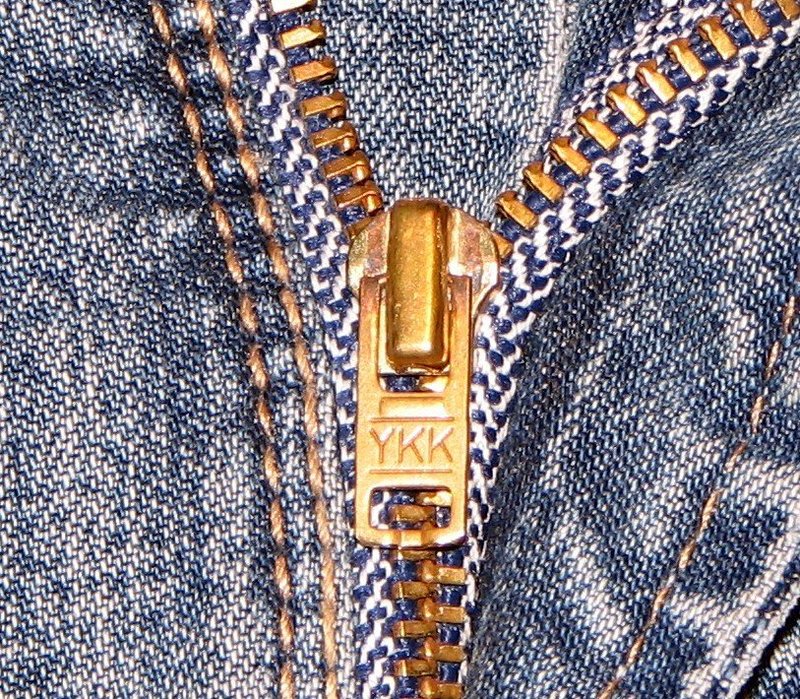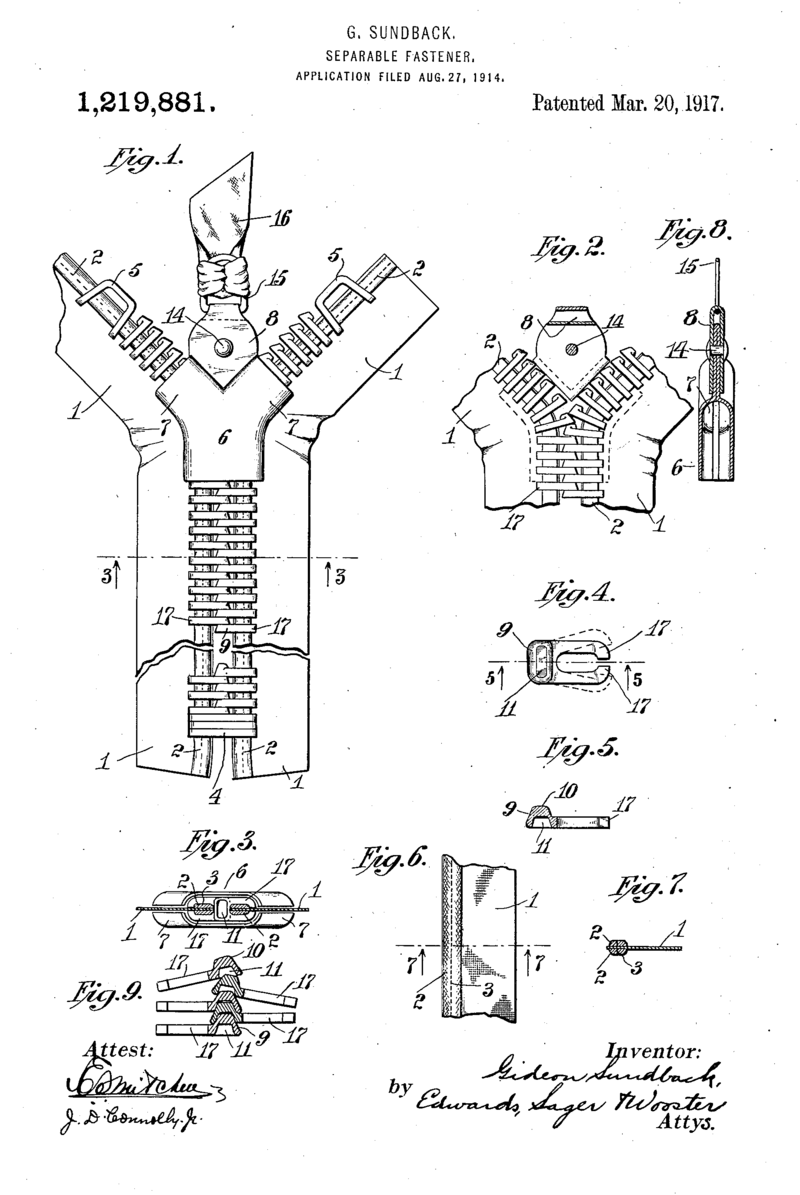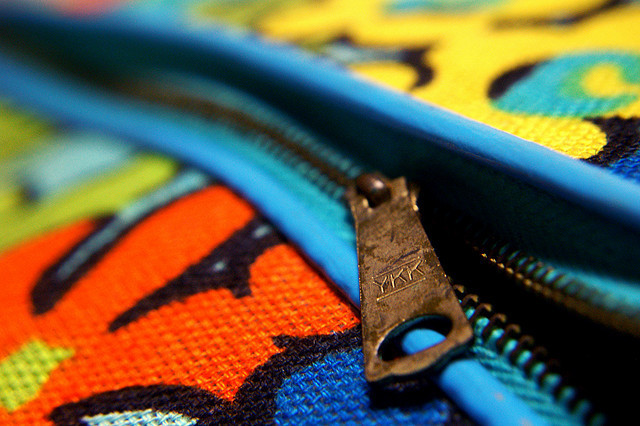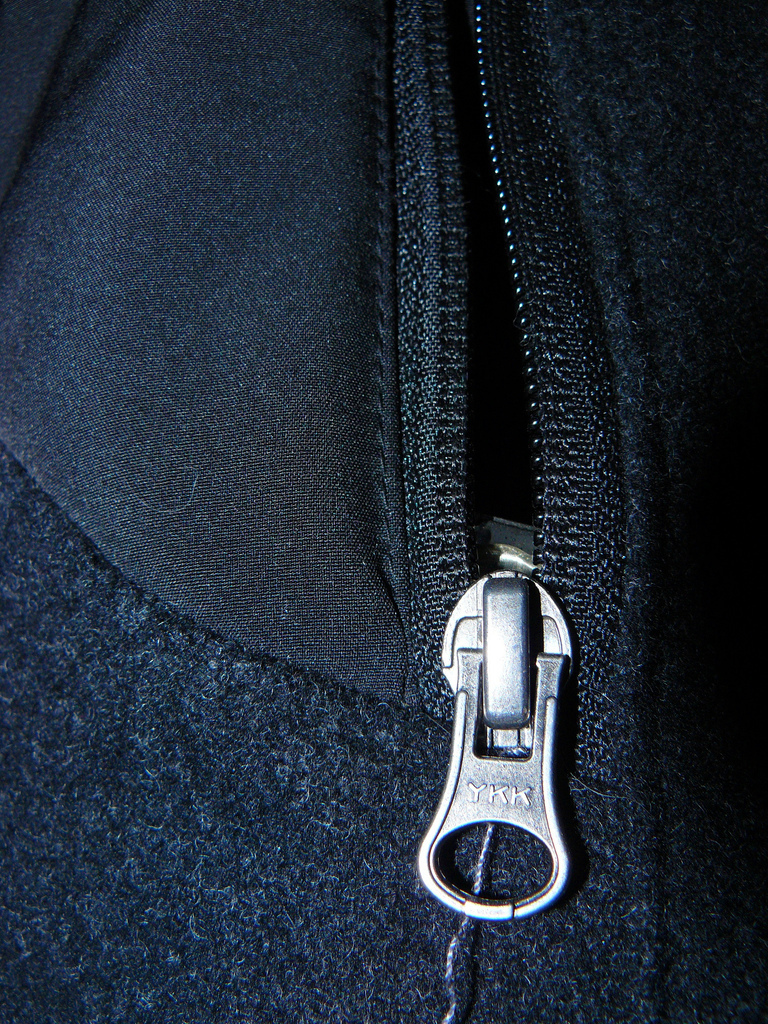How the Japanese city of Kurobe became the world capital of zippers

There is no such groin in the world to which the hand from the city of Kurobe would not reach. And they managed to do this through the company YKK - the world's largest manufacturer of zippers. The company produces about half of all lightning in the world - about 7 billion annually. But in order to understand how this company has achieved such success, it is necessary to go back to the very moment of the creation of the clasp.
Humanity was fed up with buttons around the middle of the Victorian era. Pins, brooches, clasps and buttons - all these devices have been with us since ancient times . And finally, it was then that they met a worthy opponent. Elias Howe, who became famous for the invention of the sewing machine, patented in 1851 an “automatic continuous clothing fastener”. His invention was forgotten, but still influenced the then rapid development of invention.
')

Elias Howe
Information waves propagating from the patent at the end of the 19th century reached the Chicago inventor Whitcomb Judson. He set out to save humanity from the shoes on the buttons and invented something called " clasps, clips ." True, his invention was too cumbersome, and his successive improvements only made it more and more difficult. Judson founded the company Universal Fastener Company (universal fasteners) with the help of a sponsor. Unfortunately, his device had one big drawback - it had the ability to undo at the most inappropriate moments. The largest lot was sold by partners to the American postal system, which tried to use them for bags of correspondence. True, the number of the party was quite small - twenty pieces.
But Judson's extreme versatility of hobbies (from tramways to rings in the nose for pigs ) prevented him from doing so to improve his device. This honor fell to Gideon Sundback, a Swedish inventor who worked for the Universal Fastener Company. In 1914, he perfected the product and called it " split fastener ."

The split fastener turned out to be matched by its modern era of automobiles, tanks and industrialization. It remained only to come up with her suitable name. And this happened already in the company for the production of rubber products Benjamin Franklin Goodrich, who installed it on the shoes he produced in 1923. At first, the boots were called Mystik, but they were sold very poorly. Inspiration came from the very top of the company, from the president:
“We need some word denoting activity, movement ... Anything that indicates how this thing moves quickly, vigorously, and with lightning speed (zips). Why not call it zipper? ”
Since then, the name zipper is used in English to indicate a zipper.

The company Universal Fastener Company was renamed Talon and settled in Meadville, Pennsylvania. There opened the first mass production of clasps. By 1930, Talon was selling 20 million fasteners per year - but mostly for such unglamorous things as canisters or engine covers. And only after Parisian fashion designer Elsa Schiaparelli first used them in her spring collection in 1935, the zipper entered the world of high fashion. And after that, in the men's wardrobe. In 1937, Esquire magazine announced the victory of lightning over buttons. By the end of World War II, Midville was selling 500 million clasps a year and was declared the fastener capital of the world. Even the local radio station was named WZPR.
So how did a small town in Japan, on the other side of the world, throw this giant off the throne? Through the goal set by the visionary Tadao Yoshida , the founder of Yoshida Kōgyō Kabushikigaisha (Yoshid’s joint-stock production), the abbreviation of which is YKK.
Yoshida was the son of an ornithologist. After organizing several failed business enterprises, he moved to Tokyo and, seeing an unprecedented growth in the zipper market, opened his company in 1934. Yoshida shamelessly copied the products and machines of a successful company Talon, adding some innovations - for example, the use of aluminum instead of copper. After the start of World War II, he kept the business, supplying fasteners for the needs of the Japanese Navy, and after his factory burned to the ground as a result of the bombings in 1945, he rebuilt it in his hometown Kurobe and started everything from the beginning.
Yoshida’s confidence in his abilities was spurred on when he read the article “A Teaching on Wealth ” by the famous American entrepreneur Andrew Carnegie. After that, he himself created a quasi-philosophy of production and called it the " Cycle of Good ." He postulated that "no one thrives without benefiting others." This credo was simple, but effective - it meant that if the workers were well treated, they would produce the best product that would benefit customers, and those satisfied with the product would benefit YKK. In short, Yoshida wanted his clasps to hold not only parts of clothing, but also the very fabric of society.

The specialty of YKK was that they produced all the necessary components themselves. Brass, aluminum, polyester, threads were prepared in the same place, in Kurobe. Workers lived in dormitories near the factory. Soon, around Yoshida and his “cycle of good” a whole cult of leadership grew. Designers of the company, inspired by the success, began to invent thousands of different types of fasteners aimed at different industries and individual clients. They made the smallest zipper in the world, the most hidden, the first nylon and polyester zippers, the thinnest zippers ... Soon, YKK had already opened production around the world to offer the best conditions for regional companies, and by 1974 YKK had already captured a quarter of the world production clasps. Annual production of the company could be stretched from the Earth to the Moon and back.
Talon, by contrast, producing by the end of the 1960s 70% of all fasteners in the United States, by this time did not reach up to half of this amount. Its sunset was pretty quick. By 1993, all fastener factories had disappeared from Midville.

And Kurobe and YKK continue the triumphant march. They invented silent clasps for the military, fireproof clasps for firefighters, airtight clasps for astronauts. Clasps for drainage, rockets , fishing nets . There are also punctures - for example, one exporter in the southern United States tried to sell their clasps under the KKK brand in order to conquer local markets. Another time the company was announced in a cartel arrangement . The company is constantly experiencing competition from small Chinese manufacturers who manage to copy machine tools for the production of products - just as Yoshida did at one time.
And yet, YKK remains an international brand. Their buckles are located on our clothes, providing instant access (or insulation) to various parts of our bodies. So, starting from Kurobe, YKK has become a global watchman.
Source: https://habr.com/ru/post/297720/
All Articles